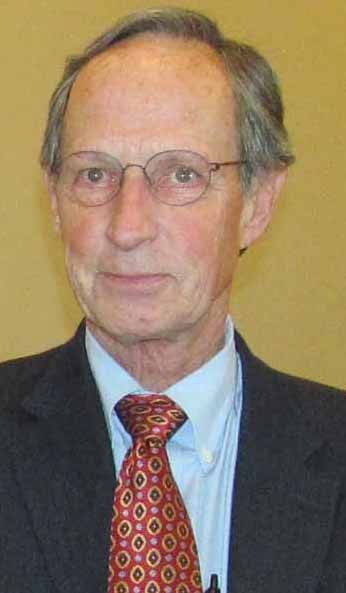Valley continues to face water challenges from within and without

ALAMOSA — “We are facing an unknown challenge with this Renewable Water Resources entity,” Rio Grande Water Users Association Attorney Bill Paddock said during the group’s annual meeting this month.
“We don’t know what their plans are, we don’t know if they are going to do something and what that might be and when it will be,” he added, “so we are all going to have to keep our eyes open and keep watching and listening.”
Renewable Water Resources plans to export 22,000-acre-feet from the San Luis Valley to customers in the south metro Denver area. RWR purchased the late Gary Boyce holdings encompassing 11,500 acres in the northern part of the Valley. Boyce had proposed a similar water export project. The project would budget $60 million for water acquisition to replace the 22,000-acre-foot withdrawal and $50 million for a community fund. The estimated cost of building the pipeline to export the water is $550-600 million. RWR has not yet filed anything in water court but indicated it might by the end of this year.
Rio Grande Water Conservation District General Manager Cleave Simpson added that his board has taken a stand in opposition to the RWR proposal and will vigorously oppose it. “It is contrary to everything we have worked for and believe in,” he said.
The potential export is not the only challenge facing Valley water users, Paddock said.
“We will have a lot of challenges in the next couple of years with the new sub-districts being formed and plans of management being completed,” he said.
The first year or so of annual replacement plans always have their ups and downs, he said, and it takes a while to iron out the bumps.
Water administration continues to be a challenge as well, Paddock said. A wetter year like this one following a dry year presents its own challenges of recharging the aquifer while balancing water users’ needs, he said.
He said more monitoring wells and other tools would help with water administration throughout the river basin. He added that the water division does a pretty good job of managing the river considering all of the variables it has to work with and the limited tools it has.
“It is a substantial and important challenge.”
Paddock said water management is even more critical now than it ever has been as water users face deadlines in replenishing the aquifers and as new sub-districts come into operation and have to replace their depletions.
He expected quite a few changes in water rights as the remainder of the sub-districts become operational in the next couple of years.
“If we can keep Renewable Water Resources at bay and they don’t file and get water sub-districts up and operating we can get into a flat spot in the road where things are operating pretty well … just trying to manage the system so we can have long-term sustainable water supplies … That’s the goal we set out to accomplish 25 years ago and we are getting closer than we were.”
Simpson also gave a report to the Rio Grande Water Users Association members during their annual meeting. He said the first water management sub-district is completing its seventh year and working on its annual replacement plan to submit by April 15 for its eighth year of operation.
The challenge for that sub-district is aquifer sustainability, a required mandate that was reiterated recently in a letter from the State Engineer Kevin Rein, Simpson reminded the water users. Rein acknowledged the efforts Sub-district #1 had made to try to recover the aquifer but also recognized that 2018 wiped out the gains the sub-district had made. Rein reminded water users that he was tasked with administration of the required sustainability mandate and his only recourse if the sub-district did not meet that requirement was to not approve the annual replacement plan. That would mean that the nearly 3,000 wells covered under Sub-district #1 would be in a cease and desist situation, Simpson said, unless they had their own plans of augmentation. He said the state engineer cannot turn off the wells, but his administrative tool would be to not approve the annual replacement plan.
Simpson said the sub-district is seven years into a 20-year time frame to meet that sustainability requirement. “It’s a pretty steep hill to climb for Sub-district #1,” he said.
He said the sub-district board of managers is working to develop more incentives for water reduction such as greater flexibility in its fallowing programs and an increased variable fee from $75 to $90.
As far as other sub-districts, Simpson said #2 (alluvial wells along the river between Alamosa and Del Norte) will be submitting its first annual replacement plan by April 15, as will #3, which encompasses the confined aquifer system on the Conejos in the southern part of the Valley. That will be the first sub-district with a confined aquifer sustainability requirement. That will be a new challenge, Simpson said.
The remaining three sub-districts should be in the same position of submitting annual replacement plans by next year, Simpson added.



